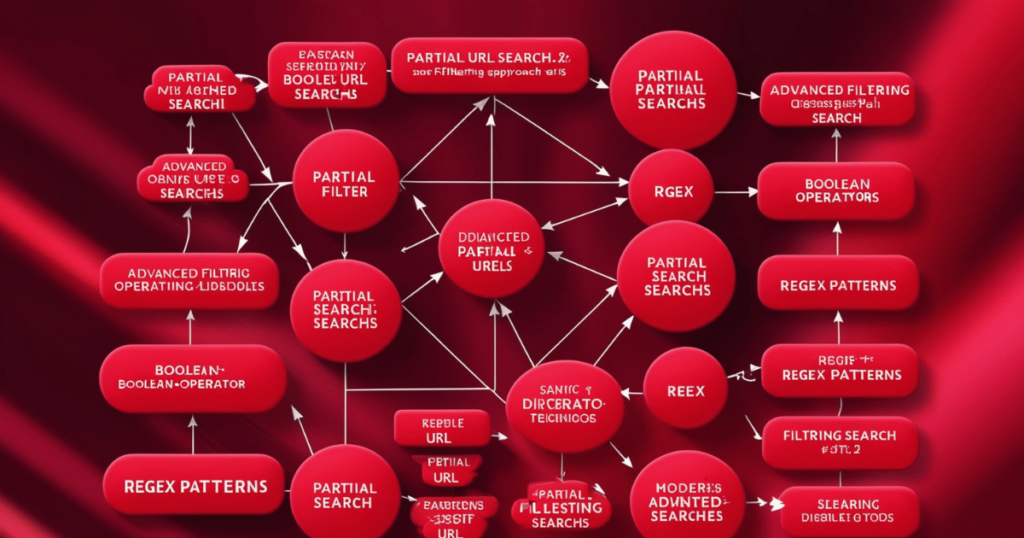
In the realm of digital research and SEO optimization, the partial URL search engine strategy stands out as an essential technique for narrowing down search results and uncovering specific content. By leveraging partial URL queries effectively, users can gain access to hidden directories, specific content segments, and improve overall search visibility. In this guide, we dive deep into mastering partial URL searches using advanced search operators, Google Dorks, and strategic SEO practices.
Table of Contents
ToggleWhat is Partial URL Search Engine?
A partial URL search engine query involves searching for segments of a URL rather than the entire domain. This technique is highly effective when the exact URL is unknown, allowing users to locate content based on recognizable URL fragments. For example, if you know part of a blog’s URL path, like /2024/, but not the complete address, using a partial URL search engine strategy can help you find relevant pages.
Why Use Partial URL Search Engine Techniques?
The primary advantage of using partial URL search engine methods is precision. This strategy helps you:
- Discover Hidden Content: Locate pages that might not be visible through traditional navigation or sitemaps.
- Streamline SEO Analysis: Quickly identify specific sections of a website for content analysis and keyword optimization.
- Enhance OSINT Research: Gather detailed information efficiently for cybersecurity investigations or digital forensics.
Using Google Search Operators for Partial URL Search Engine Queries
Google search operators are critical for executing partial URL search engine queries effectively. Let’s explore the most powerful operators and how to use them.

1. The inurl: Operator
The inurl: operator is one of the most commonly used tools for partial URL searches. It helps find URLs containing specific words or phrases.
site:example.com inurl:blog
In this example, the search filters results to show only those with “blog” in the URL path on example.com. This technique is highly effective for discovering blog content, user profile pages, or other directory-based content.
Example Use Case: If you need to find all SEO-related guides on a specific domain, use:
site:example.com inurl:seo-guide
This search will list all the pages that include “seo-guide” in their URL, helping you pinpoint relevant resources quickly.
2. The site: Operator
Using the site: operator is a fundamental practice in partial URL search engine queries. It limits your search to a specific domain, making it easier to find related content.
site:example.com "pricing"
This query helps locate all instances of the word “pricing” across example.com, even if the exact URL path is unknown.
3. Combining inurl: and intitle: Operators
To refine your partial URL search engine strategy, combine the inurl: and intitle: operators for more precise results.
site:example.com inurl:2023 intitle:guide
This search narrows down content to those pages with “2023” in the URL and “guide” in the title. It’s a great way to find annual reports or specific guides.
Advanced Techniques for Partial URL Search Engine Queries
When basic search operators don’t yield the desired results, advanced techniques can help uncover specific content.
4. Quoting URL Segments
Quoting parts of the URL path is another effective technique. This forces Google to search for the exact string you provide.
site:example.com "blog/archives/2022"
This search finds content specifically in the “archives” section for 2022. It’s a powerful way to locate historical or archived information.
5. Using Wildcards for Broader Matches
The asterisk symbol (*) can be used to replace unknown parts of a URL in your search query, broadening the scope.
site:example.com "*/pricing"
This search identifies any URL segment ending with “pricing,” regardless of the preceding path, making it useful for finding pricing pages on e-commerce sites.
Combining Google Dorks for Advanced Search
Google Dorks are advanced search techniques that go beyond standard search queries. These specialized commands can reveal hidden data or directories not easily accessible through a standard search engine query.

Example Dork:
site:example.com inurl:index of /admin
This dork uncovers directory listings for admin pages, which can be useful for cybersecurity audits.
Benefits of Using Google Dorks
- Improved Data Discovery: Access content that is not indexed in the typical search results.
- Enhanced Security Testing: Identify potential vulnerabilities in web structure and content exposure.
Optimizing Your Content for Partial URL Search Engine Queries
For website owners and SEO specialists, optimizing content for partial URL search engine visibility is crucial for boosting search rankings. Here’s how to enhance your pages.
6. Create SEO-Friendly URL Structures
Ensure that your URL paths are descriptive and include relevant keywords. This helps search engines understand the content better and rank your pages effectively.
Example URL:
https://example.com/2024-seo-guide/best-practices
7. Regularly Update Content and Use Redirects
If your content moves or changes frequently, use 301 redirects to maintain search visibility and prevent broken links. Consistently updating content signals to search engines that your site is active and relevant.
FAQs
1. What is a partial URL search engine?
A partial URL search engine allows users to search using fragments of a URL, rather than needing the complete address, to locate specific content.
2. How does the inurl: operator work in Google search?
The inurl: operator helps find pages that include specific words or phrases in their URL, narrowing down search results effectively.
3. Can I use Google Dorks for partial URL searches?
Yes, Google Dorks can be very effective for finding hidden or sensitive content based on URL patterns.
4. Why should I optimize my URLs for partial searches?
Optimizing URLs with descriptive keywords improves visibility, helping your content rank higher in search results for related queries.
5. What are common pitfalls in partial URL searches?
Common issues include over-relying on generic URL fragments, which can return too many irrelevant results, and not using enough search operators for precision.
By mastering partial URL search engine techniques and using these advanced strategies, you can significantly improve your search efficiency, discover hidden content, and boost SEO rankings effectively.



